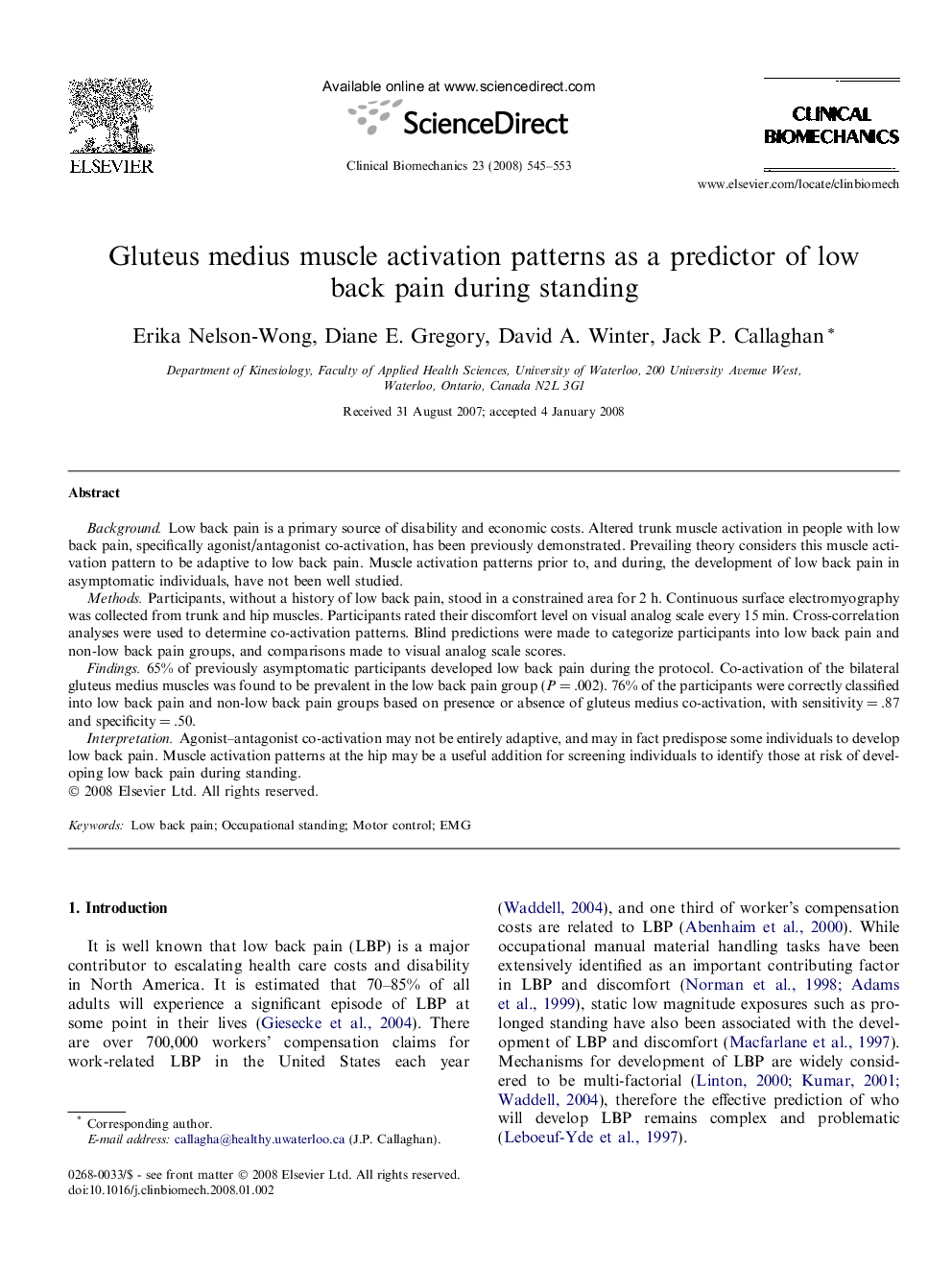| Article ID | Journal | Published Year | Pages | File Type |
|---|---|---|---|---|
| 4051460 | Clinical Biomechanics | 2008 | 9 Pages |
BackgroundLow back pain is a primary source of disability and economic costs. Altered trunk muscle activation in people with low back pain, specifically agonist/antagonist co-activation, has been previously demonstrated. Prevailing theory considers this muscle activation pattern to be adaptive to low back pain. Muscle activation patterns prior to, and during, the development of low back pain in asymptomatic individuals, have not been well studied.MethodsParticipants, without a history of low back pain, stood in a constrained area for 2 h. Continuous surface electromyography was collected from trunk and hip muscles. Participants rated their discomfort level on visual analog scale every 15 min. Cross-correlation analyses were used to determine co-activation patterns. Blind predictions were made to categorize participants into low back pain and non-low back pain groups, and comparisons made to visual analog scale scores.Findings65% of previously asymptomatic participants developed low back pain during the protocol. Co-activation of the bilateral gluteus medius muscles was found to be prevalent in the low back pain group (P = .002). 76% of the participants were correctly classified into low back pain and non-low back pain groups based on presence or absence of gluteus medius co-activation, with sensitivity = .87 and specificity = .50.InterpretationAgonist–antagonist co-activation may not be entirely adaptive, and may in fact predispose some individuals to develop low back pain. Muscle activation patterns at the hip may be a useful addition for screening individuals to identify those at risk of developing low back pain during standing.
